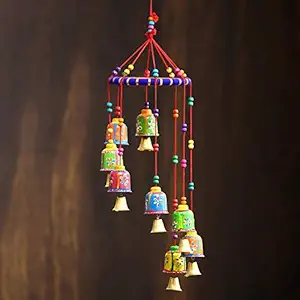હા આરાસુર માં અંબા કરે રે કિલ્લોલ
હા આરાસુર માં અંબા કરે રે કિલ્લોલ
હે કરે રે કિલ્લોલ મધરા મધરા બોલે મોર
કરે રે કિલ્લોલ મધરા મધરા બોલે મોર
આરાસુર માં અંબા કરે રે કિલ્લોલ
આરાસુર માં અંબા કરે રે કિલ્લોલ
હા ચોટીલામાં માતા ચામુંડા કેવાણા
હે ચોટીલામાં માતા ચામુંડા કેવાણા
એ સિંહ ઉપર બેસીને માડી કરે રે કિલ્લોલ
સિંહ ઉપર બેસીને માડી કરે રે કિલ્લોલ
આરાસુર માં અંબા કરે રે કિલ્લોલ
આરાસુર માં અંબા કરે રે કિલ્લોલ
Overview of “Aarasur Maa Amba Kare Killol”
Title & Meaning
“Aarasur Maa Amba Kare Killol” refers to the joyous play (“Killol”) of Mother Amba in Aarasur, invoking her divine dance or motion, celebrating her presence among devotees.
Genre & Tradition
This song is a Tran-Tali (3-clap) Garba, part of the festive folk devotional tradition in Gujarat, especially sung during Navratri. :contentReference[oaicite:0]{index=0}
Language & Dialect
Lyrics are in Gujarati, with terms like ‘Amba’, ‘Killol’, ‘Mor’, using local flavor, imagery of nature and mythic mother-goddess traditions. :contentReference[oaicite:1]{index=1}
When & Occasion
The song is typically sung during Navratri nights, in Garba/Raas circles, and devotional congregations to invoke the Mother Goddess. :contentReference[oaicite:2]{index=2}
Fame & Artist Info
This particular rendition is performed by Kinjal Dave in the album “Killol,” composed by Alpesh Panchal, with lyrics attributed to Traditional sources. :contentReference[oaicite:3]{index=3}
Lyrics Structure & Themes
Refrain & Chorus
The repeated lines “Aarasur Maa Amba Kare Re Killol” form a strong refrain, inviting the audience to join, dance, and express devotion collectively. :contentReference[oaicite:4]{index=4}
Imagery of Nature
The lyrics use imagery such as “Mor” (peacock), references to “sinh” (lion), “Chotila / Chamulda” etc., to evoke beauty, power and divine presence. :contentReference[oaicite:5]{index=5}
Devotional & Mother Goddess Invocation
The song repeatedly addresses Mother Amba or Mataji, connecting with her as protector, divine power, source of joy. Devotional invocation is central. :contentReference[oaicite:6]{index=6}
Mythic Symbols & Animals
Use of symbolism such as the lion mount, peacock calls, or references to lion and mythic mother forms relate to traditional stories, enhancing mythic aura. :contentReference[oaicite:7]{index=7}
Emotional & Rhythmic Build-Up
Song alternates between calm devotional verses and more energetic refrains which build up the mood for Garba dance and communal participation. :contentReference[oaicite:8]{index=8}
Musical & Performance Elements
Instrumental & Rhythm Style
This Tran-Tali Garba uses 3-clap rhythm style, possibly accompaned by dhol, manjira, and folk percussions to maintain beat, matching traditional Garba dance format. :contentReference[oaicite:9]{index=9}
Tempo & Dance Energy
The tempo is upbeat especially during refrains, designed to energize dancers, with pauses/soft parts to let meaning of verses sink in. :contentReference[oaicite:10]{index=10}
Live vs Studio Version Differences
Live performances tend to have spontaneous extensions of refrains, more crowd call-response; studio versions are more controlled and polished in vocals/instrumentation. :contentReference[oaicite:11]{index=11}
Audience Interaction
Because of the repeating refrains and simple chorus lines, listeners often join in, sing along, clap, increasing engagement and participation. :contentReference[oaicite:12]{index=12}
Visual & Costume Aspects
Garba nights with this song often involve colorful dress, mirror work, lit lamps or lights, traditional attire which enhance mood and devotional feel. (Inferred from usual Garba tradition.)
Festivals & Cultural Importance
Navratri Role
This song features prominently during Navratri, especially in areas of Gujarat where Tran-Tali Garbas are sung, contributing to festive spiritual ambiance. :contentReference[oaicite:13]{index=13}
Community Bonding
Performing the song in groups strengthens bonds among participants; shared singing, shared time; elders teaching young ones; sense of belonging. :contentReference[oaicite:14]{index=14}
Preserving Gujarati Folk Heritage
Because it is a traditional Garba passed down orally, its use helps preserve folk lyrics, pronunciation, regional styles, and devotional culture. :contentReference[oaicite:15]{index=15}
Emotional Uplift & Devotion
Singing this song invokes joy, awe, spiritual thrill among devotees; hearing refrains, dancing gives catharsis and devotional energy. :contentReference[oaicite:16]{index=16}
How to Use & Share
Translations & Transliteration
Including Gujarati lyrics alongside transliteration in Latin script or English/Hindi translation helps non-Gujarati speaking devotees follow and share. :contentReference[oaicite:17]{index=17}
Audio & Video Embeds
Embedding the official song (Spotify / YouTube) or lyric video increases dwell time and allows users to enjoy song without leaving page. :contentReference[oaicite:18]{index=18}
Printable Lyrics & PDF Option
Providing a downloadable or printable version of the lyrics aids devotees who want offline access, recital during Garba nights. :contentReference[oaicite:19]{index=19}
“Aarasur Maa Amba Kare Killol” refers to the joyous play (“Killol”) of Mother Amba in Aarasur, invoking her divine dance or motion, celebrating her presence among devotees.
This song is a Tran-Tali (3-clap) Garba, part of the festive folk devotional tradition in Gujarat, especially sung during Navratri. :contentReference[oaicite:0]{index=0}
Lyrics are in Gujarati, with terms like ‘Amba’, ‘Killol’, ‘Mor’, using local flavor, imagery of nature and mythic mother-goddess traditions. :contentReference[oaicite:1]{index=1}
The song is typically sung during Navratri nights, in Garba/Raas circles, and devotional congregations to invoke the Mother Goddess. :contentReference[oaicite:2]{index=2}
This particular rendition is performed by Kinjal Dave in the album “Killol,” composed by Alpesh Panchal, with lyrics attributed to Traditional sources. :contentReference[oaicite:3]{index=3}
The repeated lines “Aarasur Maa Amba Kare Re Killol” form a strong refrain, inviting the audience to join, dance, and express devotion collectively. :contentReference[oaicite:4]{index=4}
The lyrics use imagery such as “Mor” (peacock), references to “sinh” (lion), “Chotila / Chamulda” etc., to evoke beauty, power and divine presence. :contentReference[oaicite:5]{index=5}
The song repeatedly addresses Mother Amba or Mataji, connecting with her as protector, divine power, source of joy. Devotional invocation is central. :contentReference[oaicite:6]{index=6}
Use of symbolism such as the lion mount, peacock calls, or references to lion and mythic mother forms relate to traditional stories, enhancing mythic aura. :contentReference[oaicite:7]{index=7}
Song alternates between calm devotional verses and more energetic refrains which build up the mood for Garba dance and communal participation. :contentReference[oaicite:8]{index=8}
This Tran-Tali Garba uses 3-clap rhythm style, possibly accompaned by dhol, manjira, and folk percussions to maintain beat, matching traditional Garba dance format. :contentReference[oaicite:9]{index=9}
The tempo is upbeat especially during refrains, designed to energize dancers, with pauses/soft parts to let meaning of verses sink in. :contentReference[oaicite:10]{index=10}
Live performances tend to have spontaneous extensions of refrains, more crowd call-response; studio versions are more controlled and polished in vocals/instrumentation. :contentReference[oaicite:11]{index=11}
Because of the repeating refrains and simple chorus lines, listeners often join in, sing along, clap, increasing engagement and participation. :contentReference[oaicite:12]{index=12}
Garba nights with this song often involve colorful dress, mirror work, lit lamps or lights, traditional attire which enhance mood and devotional feel. (Inferred from usual Garba tradition.)
This song features prominently during Navratri, especially in areas of Gujarat where Tran-Tali Garbas are sung, contributing to festive spiritual ambiance. :contentReference[oaicite:13]{index=13}
Performing the song in groups strengthens bonds among participants; shared singing, shared time; elders teaching young ones; sense of belonging. :contentReference[oaicite:14]{index=14}
Because it is a traditional Garba passed down orally, its use helps preserve folk lyrics, pronunciation, regional styles, and devotional culture. :contentReference[oaicite:15]{index=15}
Singing this song invokes joy, awe, spiritual thrill among devotees; hearing refrains, dancing gives catharsis and devotional energy. :contentReference[oaicite:16]{index=16}
Including Gujarati lyrics alongside transliteration in Latin script or English/Hindi translation helps non-Gujarati speaking devotees follow and share. :contentReference[oaicite:17]{index=17}
Embedding the official song (Spotify / YouTube) or lyric video increases dwell time and allows users to enjoy song without leaving page. :contentReference[oaicite:18]{index=18}
Providing a downloadable or printable version of the lyrics aids devotees who want offline access, recital during Garba nights. :contentReference[oaicite:19]{index=19}


